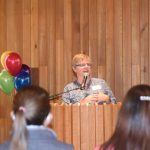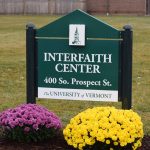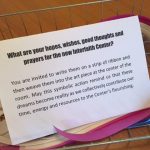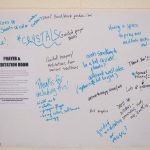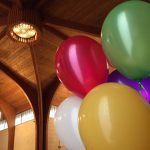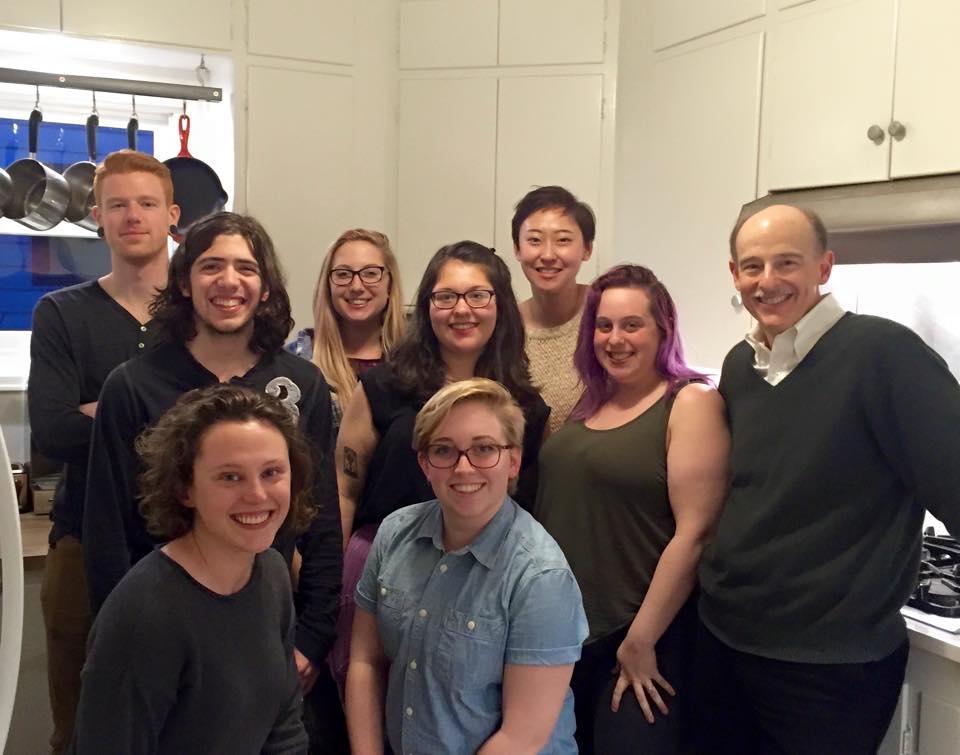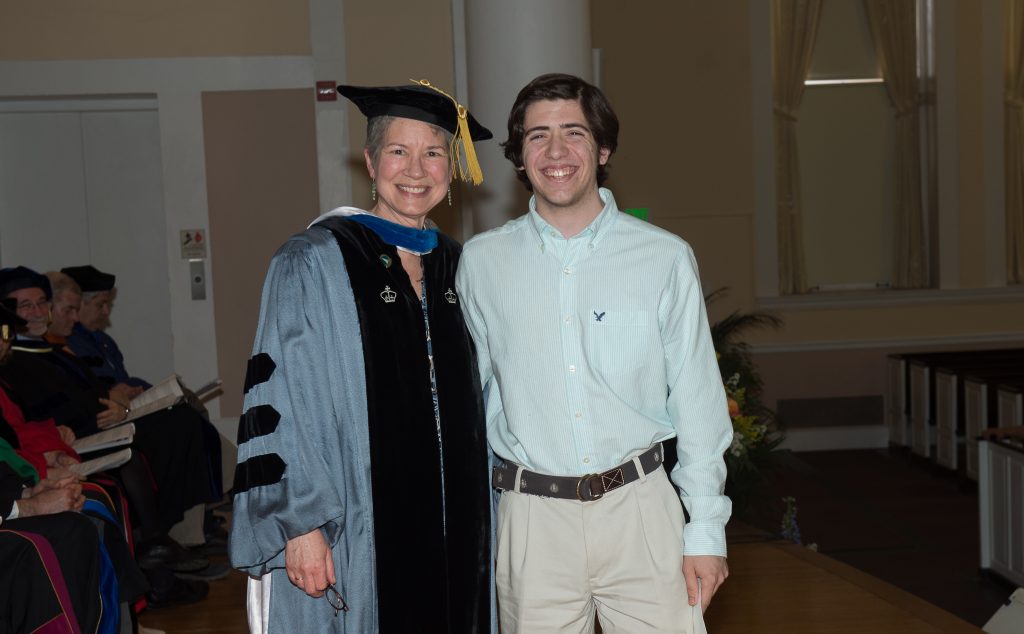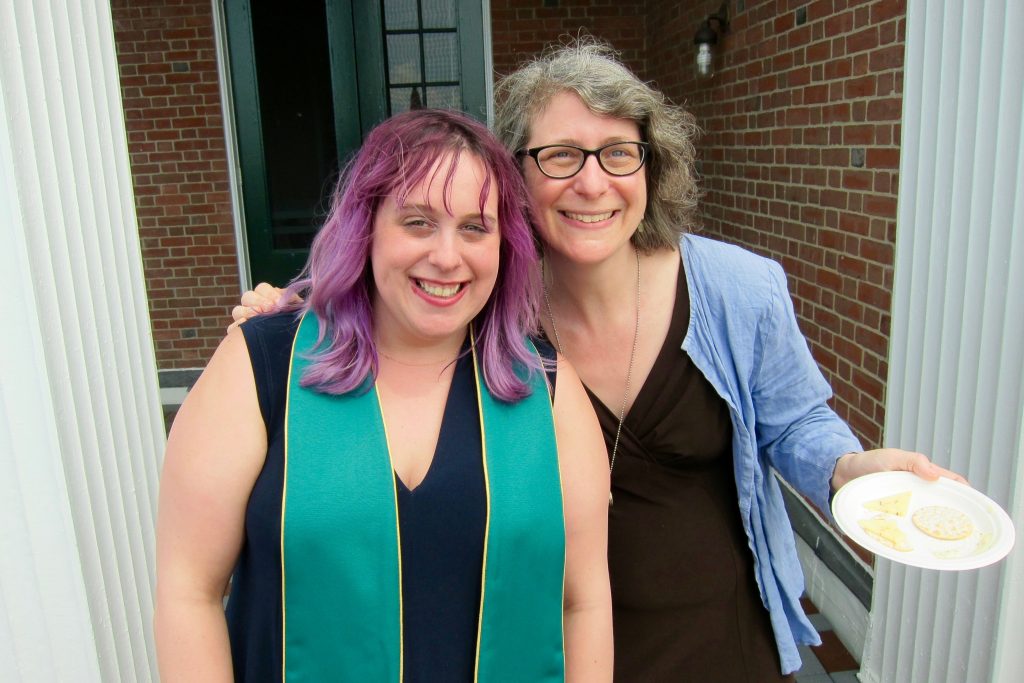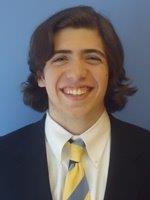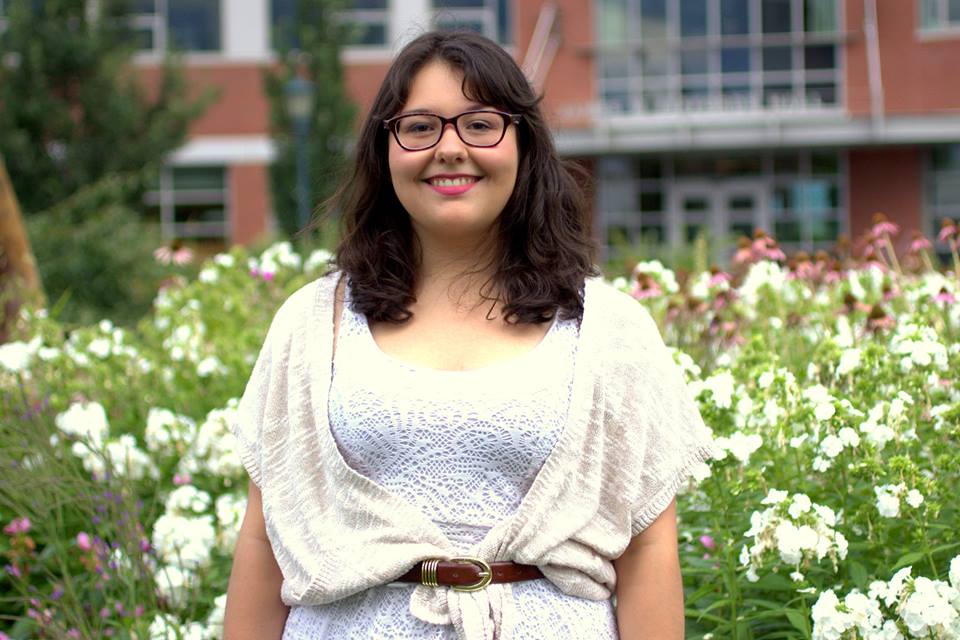Hello and Happy New Year! We are excited to announce a new series on the REL@UVM blog: The Reading List. We thought that our colleagues, students, alumni, and anyone else who happens to stumble upon this site might be interested in hearing more about what faculty in the Religion department are currently reading. We will highlight texts that we are grappling with for classes, books that shape our research agendas, and articles that we think offer an interesting perspective on current events. We will also talk about what we are reading for fun!
Responding to the 2016 US Elections
The outcome of the 2016 Presidential election was shocking to some, and a surprise to most. However, it is probably not a surprise to anyone who knows us that the REL@UVM faculty have things to say about the election and the way that it impacts our research, teaching, and broader work with campus communities. What follows are links to short comments and observations from a handful of our faculty, with the promise of more analysis and questions to come in the near future.
Trump 2016: The View from Islamic Studies
Professor Ilyse Morgenstein-Fuerst
***
The UVM Interfaith Center & UVM’s Post-Election Future
Professor Kevin Trainor
***
Pan-Indigenous Pipeline Religion
Professor Todne Thomas Chipumuro
***
What now? Scholarly Work in the Wake of Trump’s Election
Professor Vicki L. Brennan
Trump 2016: The View from Islamic Studies
By Professor Ilyse Morgenstein-Fuerst
It’s no secret that Donald Trump ran a campaign that stoked Islamophobic sentiments (in addition, of course, to anti-immigrant, anti-Mexican, misogynistic, ableist and homophobic rhetorics and staff picks). In the few weeks since the election, we have seen Trump name members of his cabinet who espouse patently and expressly anti-Muslim positions. What seems to have surprised many around the country, however, are the ways in which hate crimes—and Islamophobic or anti-Muslim hate crimes—have seemed to tick upward since the November 8 presidential election. The Southern Poverty Law Center, for example, reported on November 29 that they had tracked over 860 hate-related crimes since the election. Of these, roughly 6% (or ~54 incidents) were against Muslims or those perceived to be Muslims; additionally, Muslim women who choose to veil are at particular risk, given the public ways in which their religious identities are marked. Campuses—assumed to be both liberal havens and safe spaces by many—are not immune to post-Trump increases in harassment and violence against people of color, Muslims, Jews, LBGT+ and other minorities
These issues of violence and harassment, especially as part of campus, are tied up with white supremacy, racisms, and a now-longstanding process of labeling Muslims and Islam as a problem with which to be dealt. As far as how this effects Islamic studies, from conversations at international conferences, digitally, and in person, it is clear that many of us who study Islam have been called upon to talk with the media, offer sessions for students, join panels on our campuses, and write articles—scholarly and popular alike. In other words, as scholars of Islam, it is clear that in a moment of heightened Islamophobia, our expertise is in high demand. As teachers, it is similarly clear that we have been and will continue to be asked to tailor our syllabi to student interest (what *is* Islam, anyway?) as well as public need (let’s unlearn some of the stereotypes that contribute to Islamophobia). Personally, I’ll be on a panel in the spring for Blackboard Jungle and talking about Islamophobia; my REL30: Introducing Islam will specifically and methodically address anti-Muslim rhetoric in historic contexts and today, instead of just referencing it as we go. Moreover, as a scholar-teacher and as an advisor, I have seen the traffic in my office increase in manifold ways to students of color and of minority religious traditions, some hoping to talk through their experiences, others looking for scholarly resources, and others still seeking a safe space in which to talk about bias incidents or fears about racism and prejudice on campus.
The UVM Interfaith Center & UVM’s Post-Election Future
By Professor Kevin Trainor
On November 16th, one week after awakening to the shocking result of the presidential election, I attended the formal opening ceremony of UVM’s new Interfaith Center on the Redstone Campus, located in a building with a complicated institutional history. It began fifty-two years ago with another opening ceremony, presided over by Harvey Butterfield, the Episcopal bishop of Vermont, as he dedicated the newly constructed St Anselm’s Chapel. I have been researching that history as part of a broader survey of the teaching and practice of religion at UVM, and in a future blog post I will give a longer overview and analysis of that history, which provides the wider context for understanding the institutional significance of the new Interfaith Center, and of the recent appointment of Laura Engelken as UVM’s first Interfaith Coordinator. Here I will focus on the ceremony itself, and what I think it might mean for UVM’s post-election future.
While I’m not sure that the election results were ever explicitly referenced in the words of the various speakers that afternoon, the fact of Donald Trump’s election, and its apparent validation of his campaign’s embrace of hateful and violent rhetoric, hung like a dark cloud over the proceedings. Like many people with whom I had spoken the previous week, I felt disoriented and anxious about the future. I experienced the election results as a direct assault upon the values and forms of practice to which I, as a member of the UVM community, am committed. It thus seemed fitting to come together with a large group of UVM community members to inaugurate a new university facility whose mission is defined as “creating space for all people to explore and ethically engage the meaning-making systems that sustain their own lives and communities as well as of others” (Interfaith Center Facebook page). The creation of the new Interfaith Coordinator position and the Interfaith Center, which are administered through the university’s Center for Cultural Pluralism, are evidence of UVM’s dramatically expanded institutional engagement with issues of religious and spiritual diversity, now foregrounded as foundational elements in the university’s commitment to diversity, equity, and justice, as encapsulated in UVM’s Our Common Ground statement. This represents a significant shift in policy and practice. At UVM, as at most state-supported public universities, questions arising from community members’ religious identities were for the most part rendered invisible to public discourse, a situation that many community members have found oppressive.
Several members of the UVM community spoke: Laura Engelken (Interfaith Coordinator), Wanda Heading-Grant (Vice President of Human Resources, Diversity and Multicultural Affairs), Tom Sullivan (University President), Annie Stevens (Vice Provost for Student Affairs), and Aya AL-Namee (Senior Admissions Counselor, former Student Government Association President and 2015 UVM alumna), each of whom played an important role in the creation of the Interfaith Center. All the speakers spoke movingly of the personal significance that the new center held for them, but for me the most memorable reflections came from Aya AL-Namee. Identifying herself as a Muslim, she spoke of walking about since the election feeling like “I have a target on my back.” As SGA President in 2015, she played a key role in organizing student support for hiring an interfaith coordinator and for creating a safe place on campus for students to explore and practice their religious and/or spiritual beliefs, which culminated in the passage of an SGA resolution.

St. Anselm’s Chapel from p. 20 of A Goodly Heritage: The Episcopal Church in Vermont. Edited by Kenneth S. Rothwell. Burlington, VT: Cathedral Church of St. Paul, 1973.
But what is a fitting space for religious or spiritual practice on the campus of a public university? This is a complicated question, one that I will explore in greater depth in a future blog entry. But the opening ceremony in which I participated hints at some possible answers. A structure that began its life in the early 1960s as an Episcopal chapel, and then served as the home of the Christ Church Presbyterian community for thirty-five years, took on a new institutional identity at the end of 2013 when the university administration decided not to renew the church’s lease. The Christ Church Presbyterian community vacated the building and found at least a temporary home in the basement of St. Paul’s Episcopal Cathedral. The space they left behind was emptied of its Christian symbols and furnishings, and during this past summer the structure underwent a basic renovation, which included asbestos abatement and the addition of links to the university infrastructure. A large abstract painting by the artist Peter Heller that covers the north wall of what had been the chapel, which he donated to St. Anselm’s in 1963, was covered over with white muslin. It was within this pleasant but largely empty space that the opening ceremony took place.
Apart from the formal speeches, delivered from a lectern located in the middle of the low raised platform in the center of the main gathering space (which in an earlier incarnation served to define the chancel upon which the altar stood in St. Anselm’s), the opening celebration had the character of an extended and largely unstructured reception during which participants were free to come and go, mingle with one another and chat, and enjoy the food and drink that was provided. Two bunches of multi-colored balloons were anchored at either side of the raised platform. Music was provided by a harpist stationed on the right side of the platform. In keeping with the speakers’ frequent references to “religion and spirituality” and “religion or spirituality,” a pairing that implicitly contrasts institutionally organized forms of religion characterized by collective rituals and socially imposed belief systems, and highly individualized and idiosyncratic forms of personal spiritual exploration, there was very little orchestrated movement required of the participants. There was no collective recitation, no singing, no coordinated gestures. After years of schooling, everyone knew how to stand and listen attentively while the various speakers offered reflections from the lectern.
There were, however, two opportunities for coordinated practice. Large blank sheets of poster board were fastened to the walls in the various parts of the complex (the main gathering space, a small room that will eventually include a sink for ritual ablutions, a room designated for meditation with a collection of religious symbols among which individuals can select as their focus of choice, a lounge area with a couch and chairs and a kitchenette), and participants were invited to write in their ideas about how the spaces could be used or what they needed. A large mesh basket was also placed on a table in the main gathering space. Participants were invited to select from a collection of multi-colored ribbons, to write out their hopes and prayers for the future of the center, and then to thread their ribbons into the basket, with the expectation that the completed basket would be placed on display, a multi-colored weaving together of the participants’ materialized sentiments.
PHOTOS ABOVE FROM THE UVM INTERFAITH CENTER FACEBOOK PAGE
A few days after the ceremony, I met with Laura and we talked about the ceremony and how she understands her role as interfaith coordinator. Her plan is that anyone in the community with a UVM ID card will have free access to the center throughout the day. I asked if there would be a set of rules posted, and how center practitioners would address possible conflicts in their shared use of the space. She plans to impose as few restrictions as possible, and hopes that practitioners will learn through practice how to respectfully share the space to their mutual benefit. If conflicts occur, she will help the participants negotiate an appropriate resolution. If this seems optimistic, it is nevertheless clear that Laura is highly attuned to the ways in which religious differences, improperly addressed, can result in conflict. This is apparent from her adoption of a plastic blowfish as a kind of informal mascot for the Interfaith Center. The blowfish, or fugu in Japanese, is a highly prized culinary delicacy in Japan. Because the flesh of the fugu is highly poisonous if not properly prepared, it must be approached with knowledge and careful attention. Properly handled, it is a delight, but carelessly consumed, it is deadly. Given the poisonous discourse of religious difference that has recently dominated our public life, I believe we have good reason to celebrate the university’s new commitment to creating a safe and supportive space for members of the community to openly explore and engage their religious and spiritual commitments.
Pan-Indigenous Pipeline Religion
By Professor Todne Thomas Chipumuro
In my introductory Religion and Globalization course, our final unit explores what anthropologist Thomas Csordas terms “pan-indigenous religion” or “the surprising juxtapositions…[that] take place at the initiative of those…whose agency and ability to give voice the dominant society is still reluctant to acknowledge” (2007, 263).[1] Our intellectual journey has included a discussion of how pan-indigenous religion and the (anti-globalization) protest religion of Rastafarianism facilitate the formation of ecumenical solidarities that are built upon shared experiences of colonialism, racialization, and ethnocide and similar struggles against impoverishment and marginalization that are precipitated by neocolonialism. In class on Thursday, December 1, in student group presentations about indigenous reggae, students made their own connections between our discussions of global indigenous struggles and the contemporary events surrounding the Dakota access pipeline. In particular, they noticed the paradoxical ways in which globalization fuels the global capitalism and inequalities that make the pipeline appear a feasible economic development strategy while simultaneously underlining the shared terrain in which pan-indigenous solidarities can be expressed and performed in and around the activist at Standing Rock. To provide a contemporary example of how pan-indigenous solidarities are being expressed, I screened a short video that depicts Kereame Te Ua and Maori women performing haka—a Maori life-cycle and war ritual—on the front lines of the Standing Rock camp on Thanksgiving Day. It is my hope that we will all continue to use the classroom, informal, and undercommons spaces to learn, teach, and converse about our contemporary moment and birth emergent solidarities for our collective liberation.
[1] Csordas, Thomas. Introduction: Modalities of Transnational Transcendence. Anthropological Theory (2007): 259-272.
What now? Scholarly Work in the Wake of Trump’s Election
By Professor Vicki L. Brennan
In the days following the election I felt as though I were in a fog, upset about what seemed to be a validation of the role that misogyny and racism had played in the election, anxious about what a Trump presidency would mean for the United States and the world more generally, and unsure about what I could or even should do to respond to and act on any of this. I joined the ranks of many who made donations to nonprofit organizations. I vowed to make my own political commitments more clear and also to avoid the insularity and negativity found on social media sites. But still, I wondered (and still do): What now? What role do we as scholars have to play in Trump’s America? These questions seem especially vital given both the nature of our expertise (see my colleagues comments above for evidence of that) but also due to the fact that our expertise seems less valued and respected than ever before in a supposedly “post-fact” world.
Scholars of religion are responding in a number of ways. What follows are links to statements, op-eds, and analyses that have appeared in the weeks since the election that provide some answers to the question: “What now?”
Disciplinary Resolutions and Statements: The annual meetings of scholarly organizations most relevant to my own research and teaching interests took place soon after the election; the American Anthropological Association meeting from November 16-20; the American Academy of Religion from November 19-22; and the African Studies Association from December 1-3. I decided to stay home this year, so I viewed the meetings from a distance, via text messages from friends, live-tweeting feeds, and blog posts made by those in attendance. Based on these observations, it seems that for many these meetings were sites for the building of solidarity and plans for action.
A number of the scholarly associations with which members of our department are associated issued resolutions or statements in response to the election:
- American Anthropological Association Resolution in the Wake of the 2016 Elections
- Statement from African Studies Association Leadership
- Statement from the board of the Middle East Studies Association
- American Studies Organization’s Statement
Op-Eds, Blog posts, and other Analyses: Scholars of religion have also been publishing their takes on the election in a variety of venues. These are just a few of the things I have found useful for understanding the role that religion played in the election, the impact that a Trump presidency might have on religious communities in the United States, as well as possible answers to the question: What do we do now?
Omid Safi writes about how to respond to hatred with love at On Being, and uses the iconic film Star Wars as a potential guide to our action:
Somehow our means and our ends have to be consistent. We can’t hate our way out of Trump. There is still the need for love, for love to move into the public spaces. There is still the need for that love to be called justice when it is public, and for that same love to be tenderness when it moves inward. In confronting the Dark Side, let us never turn to the Dark Side. Let us not become the very quality we so despise.
In the days since the election, various lines from Marx’s The Eighteenth Brumaire of Louis Napoleon have been echoing in my mind–certainly his observation that history repeats itself “first as tragedy, the second time as farce”–but more crucially his reminder that we live in a world that has already been shaped by historical forces:
Men make their own history, but they do not make it as they please; they do not make it under self-selected circumstances, but under circumstances existing already, given and transmitted from the past. The tradition of all dead generations weighs like a nightmare on the brains of the living.
Historians have much to offer to our understanding of our own time, how we got here, and how we might move forward. For an example of how historians of religion are responding to Trump’s election see: Kelly J. Baker in the NY Times on the alt-right, the KKK, and white-collar Supremacy. The bloggers at Religion in American History have also made a number of posts on the election, including one by Elesha Coffman on conservatism in the 1980s and how it relates (or doesn’t) to the current moment and another by Janine Giordano Drake on the Federalist papers and the electoral college.
With the nod to Marx we might also note the need to fully comprehend the role that economics–and particularly the rise of inequality globally–played in the US election. Cornel West writes on the end of American neoliberalism:
What is to be done? First we must try to tell the truth and a condition of truth is to allow suffering to speak. For 40 years, neoliberals lived in a world of denial and indifference to the suffering of poor and working people and obsessed with the spectacle of success. Second we must bear witness to justice. We must ground our truth-telling in a willingness to suffer and sacrifice as we resist domination. Third we must remember courageous exemplars like Martin Luther King Jr, who provide moral and spiritual inspiration as we build multiracial alliances to combat poverty and xenophobia, Wall Street crimes and war crimes, global warming and police abuse – and to protect precious rights and liberties.
For those of us who want to integrate these historical lessons into our classes, Savage Minds includes a link to the Trump 2.0 syllabus in their round-up of materials on how to teach the current moment.
As scholars we need to be able to speak to the questions of truth, facts, and reason that have emerged in the wake of Trump’s rise. I hope to write about this issue in more depth in the future, since questions of religious “truth” and cultural forms of knowledge lie at the center of my research and teaching. For now, here are links to two articles that I find thought-provoking at this time: First, Biella Coleman discusses politics, performativity, truth, and lies in a post that offers a possible role that scholars who analyze religion might play in addressing our current crisis
Fake is only fake if you’ve bought into a notion of the real. And the question of what is real is even more urgent and vexed today. But theory and scholarship won’t get us out of this predicament. What we need is a pragmatic practice that recognizes the centrality of fantasy, emotions, fiction, performance, and myth for politics and political messaging.
And finally, Chimamanda Adichie reminds us that “Now is the time to talk about what we are actually talking about” on the website for the New Yorker:
Now is the time to counter lies with facts, repeatedly and unflaggingly, while also proclaiming the greater truths: of our equal humanity, of decency, of compassion. Every precious ideal must be reiterated, every obvious argument made, because an ugly idea left unchallenged begins to turn the color of normal. It does not have to be like this.
Guest Post: Professor Emeritus William E. Paden
Thanks to Kevin Trainor for calling my attention to the fine departmental blog and inviting me to contribute. I enjoyed reading about what everyone is doing these days.
I retired from UVM and the Religion Department in 2009—after 44 years! When I started in 1965 Burlington was scarcely the vibrant town it is today; and as for the department, there were just three of us religion professors trying to more or less cover the whole field.
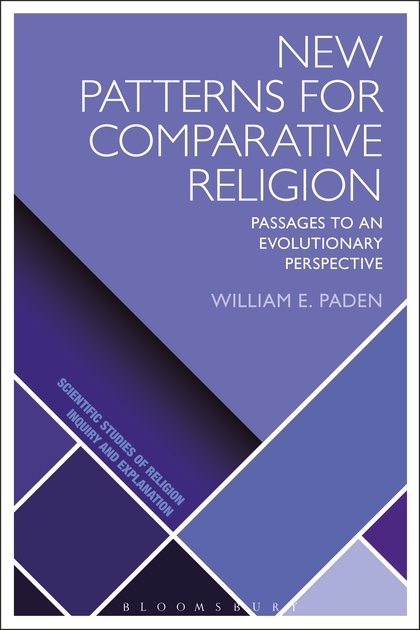 I certainly miss the students at 481 Main St. and my colleagues, but academic writing goes on as though it were an extended sabbatical. Blog readers might be interested in my new book, which came out last month, New Patterns for Comparative Religion: Passages to an Evolutionary Perspective (Bloomsbury Academic), and I’ve linked here to the front matter and complete Introduction as that gives the best overview.
I certainly miss the students at 481 Main St. and my colleagues, but academic writing goes on as though it were an extended sabbatical. Blog readers might be interested in my new book, which came out last month, New Patterns for Comparative Religion: Passages to an Evolutionary Perspective (Bloomsbury Academic), and I’ve linked here to the front matter and complete Introduction as that gives the best overview.
Essentially the book is an intellectual autobiography in three parts: reformulating some of the basic concepts (‘world’, ‘sacred’) and figures (Durkheim, Eliade ) in comparative religion; reconstructing the concept of comparison and the idea of universal human-level behaviors; and suggesting linkages between comparative religion and what I call ‘evolutionary perspective’. The 13 chapters had been published in various places over the last 20 years, but brought together here because they show the steps on my path toward the overarching theme of the book. I have added the Introduction and Epilogue.
**Editor’s note: Prof. Paden’s work on New Patterns for Comparative Religion earned the recognition of a University of Vermont Retired Scholars Award for the 2015-2016 academic year.
Religion@UVM: the Class of 2016
Our most recent alumni graduated on May 22, 2016, and–while we say this annually–we couldn’t be prouder of this accomplished set of students.
They’ve presented (and even organized) at the UVM Student Research Conference, served in various leadership positions in our undergraduate Religious Studies Club, served organizations across the University, held jobs, did community service, and–most importantly–learned, worked, read, wrote, read more, and rewrote about religion.
This class was our second to complete the new REL202 and REL203 sequence, which comprises a practicum for extended research and a colloquium, where one’s research is revised and expanded in the context of the graduating cohort and a faculty mentor. These research projects included work on defining religion China, religion and state politics in Tibet, colonial categorization of religion in Jamaica, religion and/in the transatlantic slave trade, the politics of Nazi art seizures, conversion of German Jews in the modern era, vodou in the media, and state-funded, faith-based work with refugees. This year’s colloquium was led by Prof. Trainor, who hosted a potluck for our cohort at his home.
Prof. Trainor may have been this cohort’s formal usher from student to alumni, but the whole department has, in the course of four years, watched them wrestle with ideas about, around, and beyond the study of religion. We will miss them in our home at 481 Main Street, and hope they remain in touch as their post-UVM futures become realities.
As is our ritual, the Department of Religion hosted a reception for our graduating students (majors and minors) and their families at the Waterman Manor after Commencement. Here are a few scenes of that party, with hopes we get to gather together again soon. Congratulations, Class of 2016!
Senior Spotlight: Stephen Franze
Stephen Franze in the Senior Spotlight:
a series on our graduating seniors
EDITOR’S NOTE: We’re proud to announce that Stephen Franze is this year’s recipient of the Department’s Outstanding Senior Award.
Why did you major in Religion?
My undergraduate career brought me all over the College of Arts and Sciences including Philosophy, Sociology, Political Science, and Psychology. Up until a year ago I was actually on a BS track for Psychology. However, the Religion Department was finally the place I felt at home. I decided to switch to double major once I realized that Religion is the crossroads between all the disciplines I had been studying. What really won me over was the emphasis on critical theory and the fact that, for once, the professors were actually interested in what I thought about the material we were reading. Instead of regurgitating the information I was supposed to know, a major in Religion challenged me to express what I had learned.
Where do you imagine yourself in 10 years?
Well, for one thing, I’m hoping to be debt free! Besides that fantasy, I see myself having finished at least a Master’s program in religious studies with an emphasis on Religion and Media. I think American culture has tried so hard to label itself as secular that religion has become a taboo at worst and “That thing my grandparents still adhere to” at best. Media has done a disservice to religious scholars and adherents across the country by not engaging the public with religion generally and not just in regards to terrorism or controversial social justice issues.
Imagine a first-year student has asked your advice about REL courses. What’s the one she shouldn’t dream about missing? Why?
Without hesitation I can say the one class people should not miss out on is REL 100 with Professor Morgenstein Fuerst. This was the class that made me say “I must be a Religion Major.” I cannot think of another class in any department where you can engage such a wide variety of theoretical topics and issues while being constantly invited to share the things with which you agree and disagree. It was the first time I actually felt like I was a scholar participating in the contemporary discourse.
If you could write any book, what would it be?
If I could write one book, it would be a satirical novella reflecting the current role and function of religion in contemporary US society. I want to find a way to get readers engaged so they can start to see and explore the ways religion impacts and constructs their lives regardless of whether they explicitly adhere to a particular religion.
 Congratulations on receiving the 2016 Outstanding Senior in Religion Award! In addition to your actual award, you’ve also won the opportunity to answer an additional question:
Congratulations on receiving the 2016 Outstanding Senior in Religion Award! In addition to your actual award, you’ve also won the opportunity to answer an additional question:
How to you think what you’ve learned in Religion might helping you navigate challenges in your future?
The fact is we never stop learning, so I guess you could say Religion taught me how to learn. Some say we are living in the Information Age and thus we are constantly being bombarded with supposed facts and claims, with the worlds wealth of information sitting right at our fingertips in the form of the Internet. In a time of so much noise and so many voices, it is invaluable to learn the skills necessary to weed out the superfluous details and invalid arguments in order to find those kernels of truth that can so often get lost in all the noise. I guess what I’m trying to say is that Religion taught me how to critically approach anything that I want to learn and to identify the guise of misinformation which leads people to fully accept claims such as “A Glass of Red Wine a Day is the Equivalent to an Hour at the Gym.” (Yes, this is an actual article being shared by major news outlets!)
Senior Spotlight: Cristina MacKinnon
Cristina MacKinnon in the Senior Spotlight:
a series on our graduating seniors
Why did you major in Religion?
I decided to switch into a Religion major pretty late in my college career (Spring of Junior year?) because I realized how much I enjoyed the critical thinking and engagement we do that intersects with a variety of disciplines. Religion is never simply just religion, but something that is constantly interacting with history, politics, lived experiences, authority, and power – just to name some of my favorites. I have also found all of the Religion faculty members that I have worked with to be endlessly encouraging and supportive of my interests and goals, which makes me feel truly validated as someone who aspires to be a scholar.
Where do you imagine yourself in 10 years?
Either pursuing a graduate degree in Religion (ancient/early Christianity, in particular) or happily teaching. Probably a dog-mom!
Imagine a first-year student has asked your advice about REL courses. What’s the one she shouldn’t dream about missing? Why?
I would recommend Anne Clark’s “Religion and Ways of Knowing” because it stimulated conversation around a topic at the heart of the study of religion throughout the semester by using a variety of different traditions. It also introduced me to the book, the Impossibility of Religious Freedom by Winnifred Sullivan which I think provides an insightful and impactful look into how religions are understood and its practitioners treated in an American context.
If you could write any book, what would it be?
NOT Religion-related but — I am a huge music nerd and engaging in local (and even online) music scenes has had a huge influence on who I am today. So, I spend a lot of time thinking about how gender and race/ethnicity show up in localized music communities. I would love to explore these ideas more critically and write about it!

